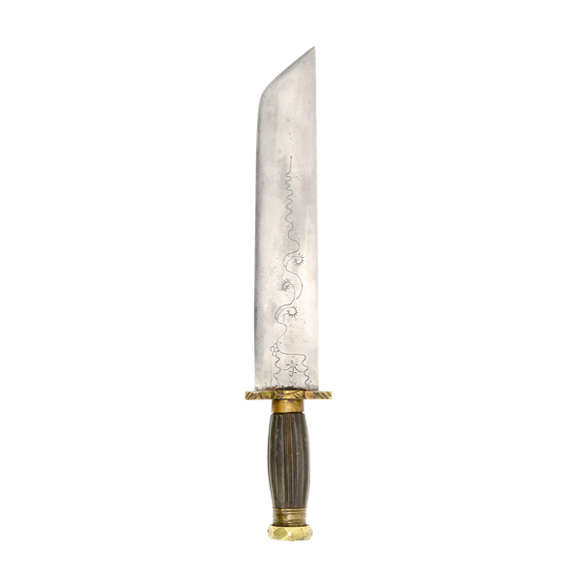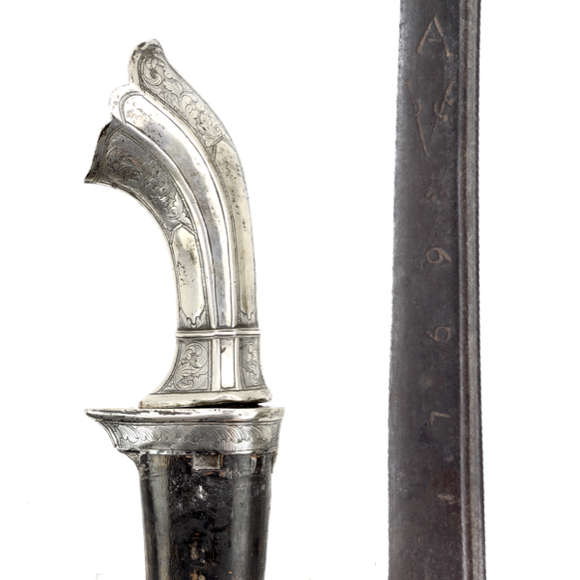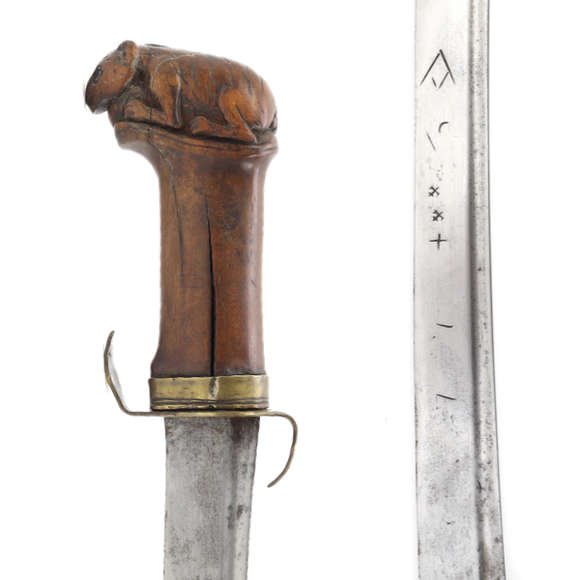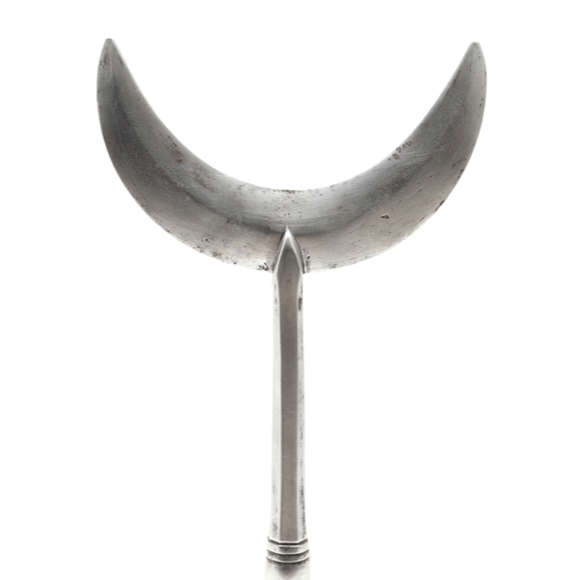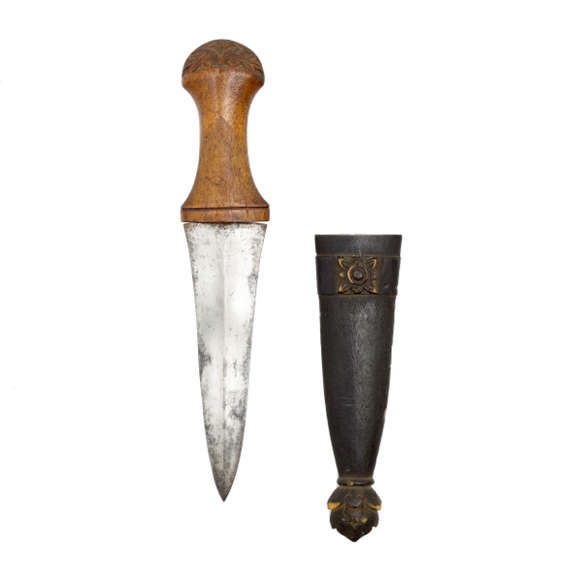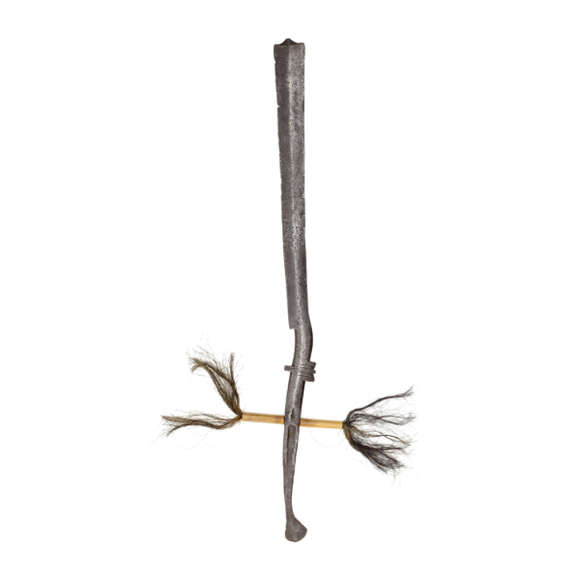Broad bladed example with horn hilt and engraved blade.
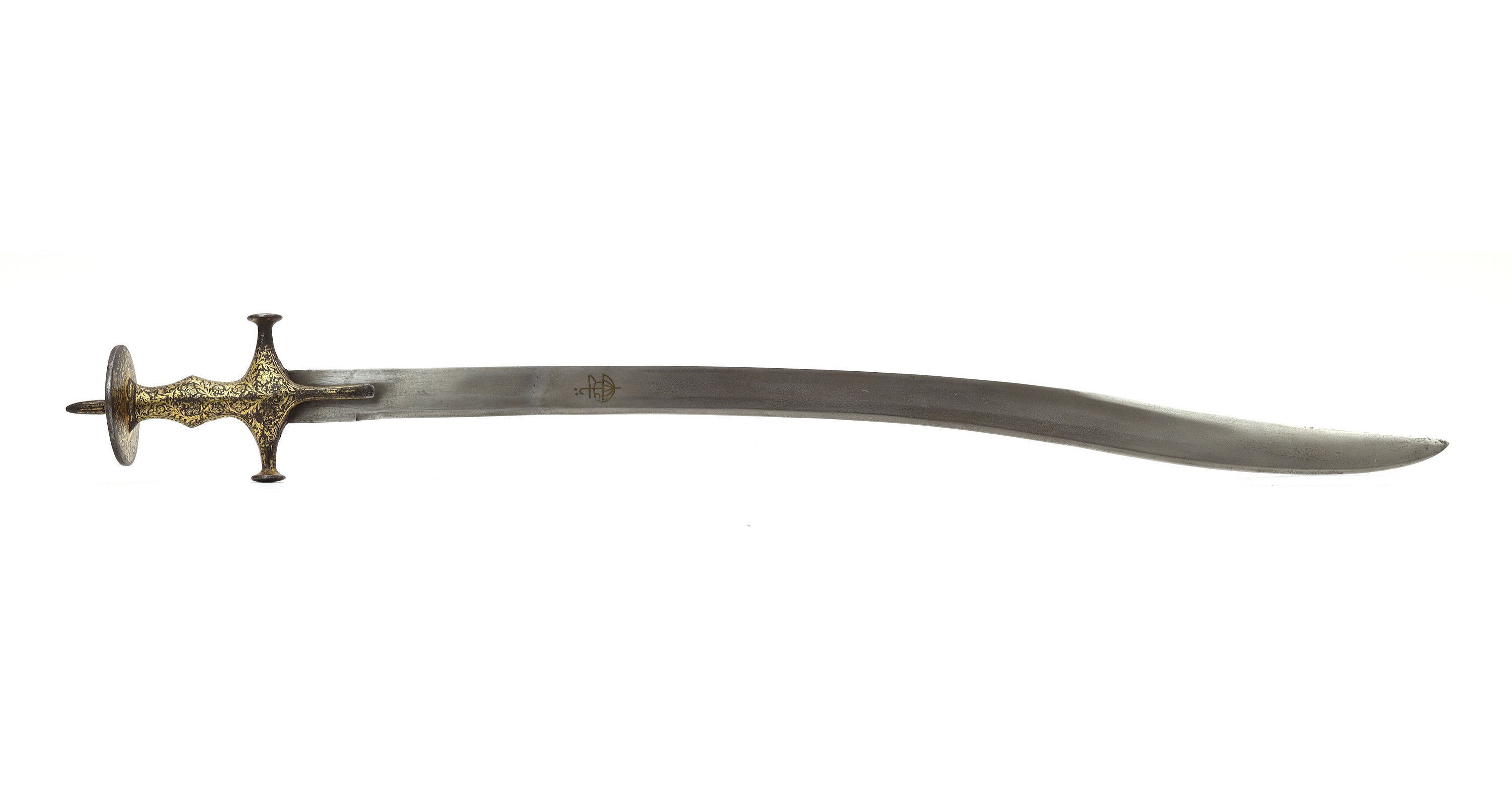
84.5 cm
72 cm
Base 4 mm
Middle 3.5 mm
5 cm from tip 2 mm
Base 32 mm
Middle 30 mm
5 cm from tip 24 mm
Description
This type of forward-curved blade, with a more sudden forward bend near the tip, was termed Rajput sosun pattah by Rawson. The typical Marwari Rajput style hilt on this one lends credence to that attribution.
The blade is made of Indian wootz steel, its tip dips downwards and curls up again near the tip. It has a semi-sharp backedge. The blade has a wide, shallow groove on either side that fades into the recurved tip. It has a lep weld about 1/3rd up the blade called mala (माला), the Hindi word for garland or necklace.
Such lap welds are common even on the best swords because it was often hard to get pieces of wootz big enough to forge a large sword. The novice may frown upon the practice and fear for its strength. But seasoned collectors will know that this is actually quite common and the welds were seen as auspicious by the Rajputs.
"The bands created by the lap-welds are known in Rajasthan as "mala", plural "male", meaning "garlands" or "necklaces" and are considered auspicious." 1
-Robert Elgood, 2017
Inlaid with brass on the right side of the blade is an umbrella mark, an auspicious symbol, with the text: “Ya Ali”
This is an invocation of Ali the Muslim warrior, famous for the phrase:
"No warrior but Ali, no sword but Zulfiqar"
Hilt
Of Karan shāhī style, with flattened quillon ends and a large flat pommel with a sunburst motif. Such hilts are associated mainly with Marwar, and Jodhpur in particular. It is tastefully decorated with stylized floral motifs in gold on a darkened backgroud.
Scabbard
The piece retains its original scabbard, in near-perfect condition. It is covered with bright red silk velvet with an irregular pattern of dots, scattered like stars in a bright night sky. It is further decorated with a strip of metallic wire running down the center on one side.
Notes
1. P.S. Rawson; The Indian Sword. Jenkins 1968.
2. Robert Elgood; Rajput Arms & Armour, Niyogi Books, New Delhi, 2017. Volume 1. Page 190.

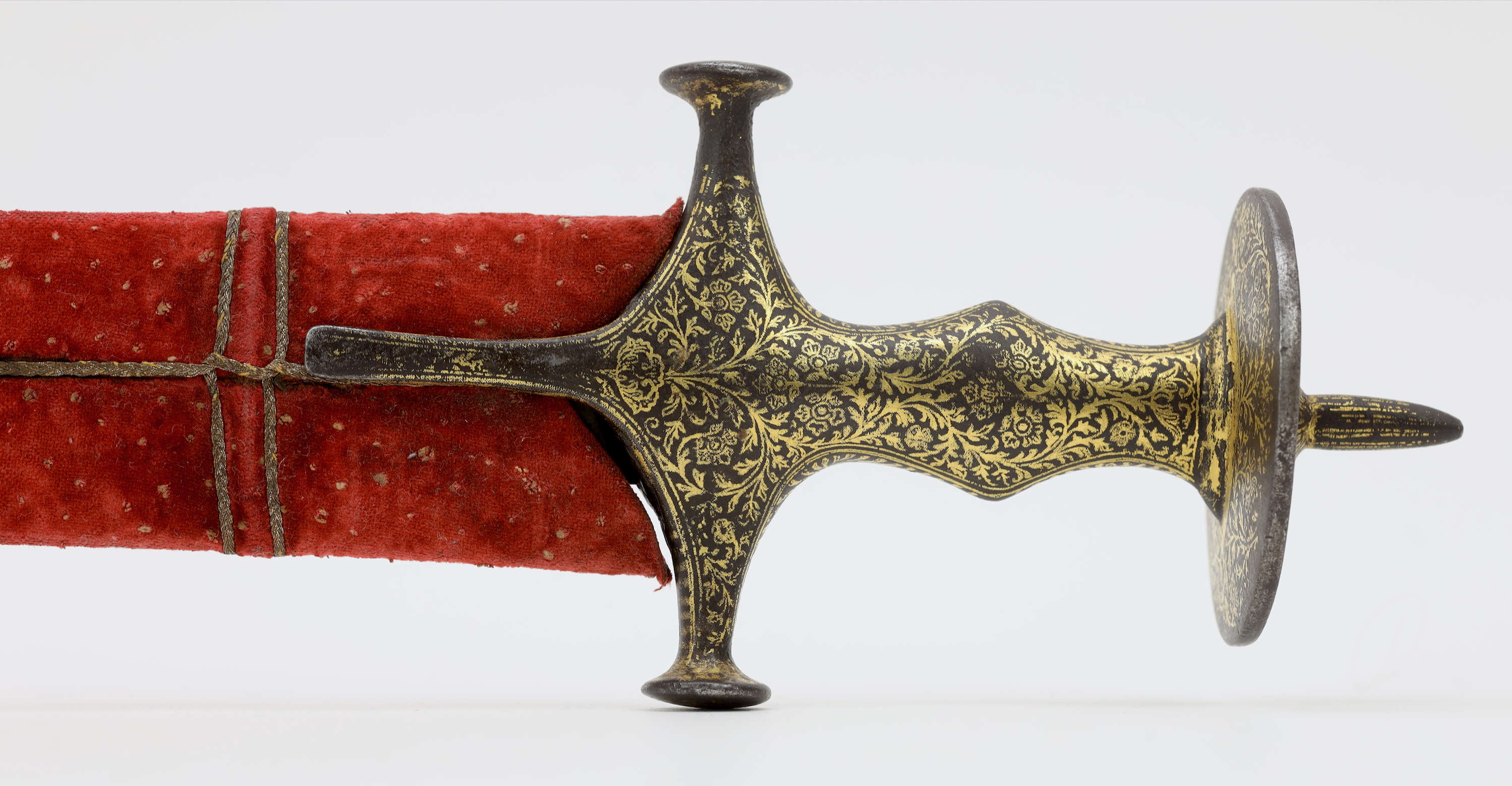
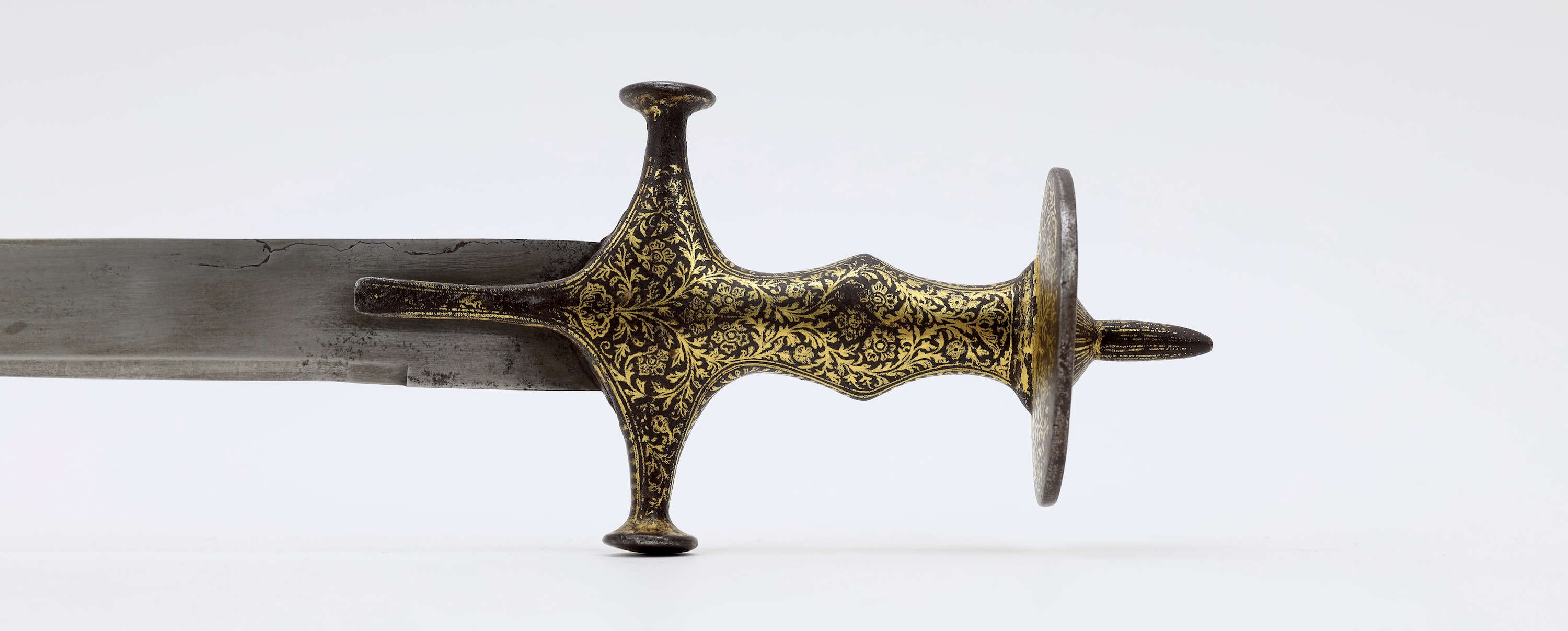



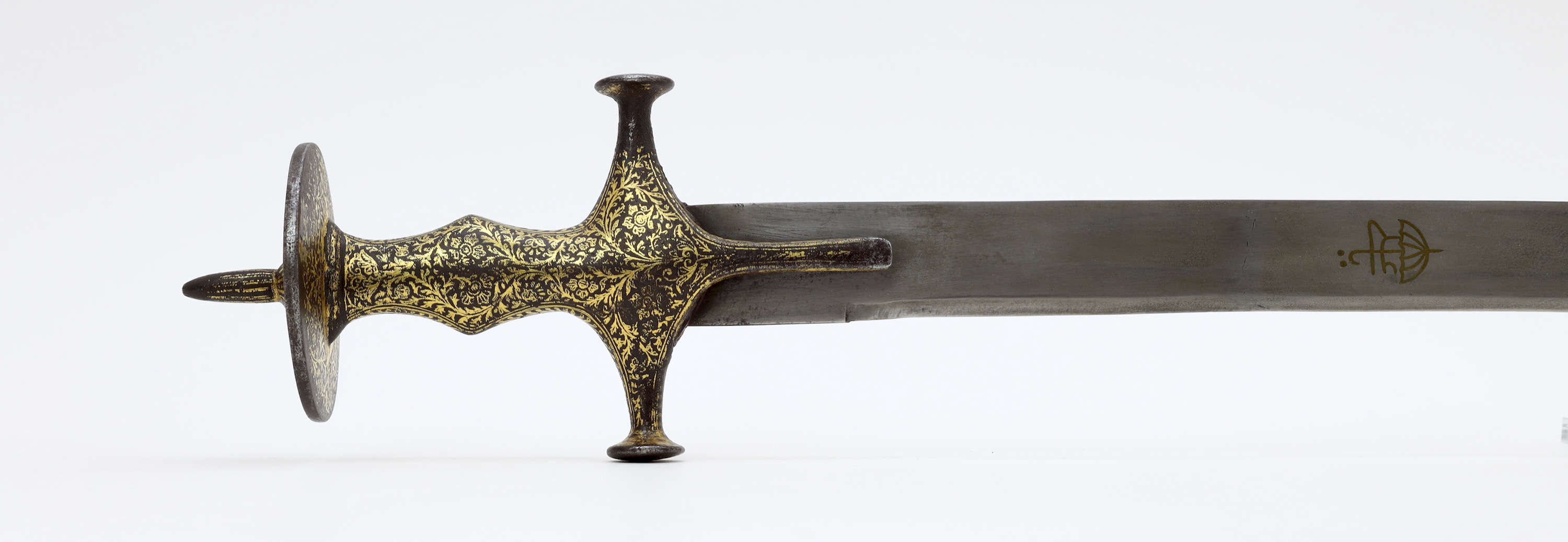

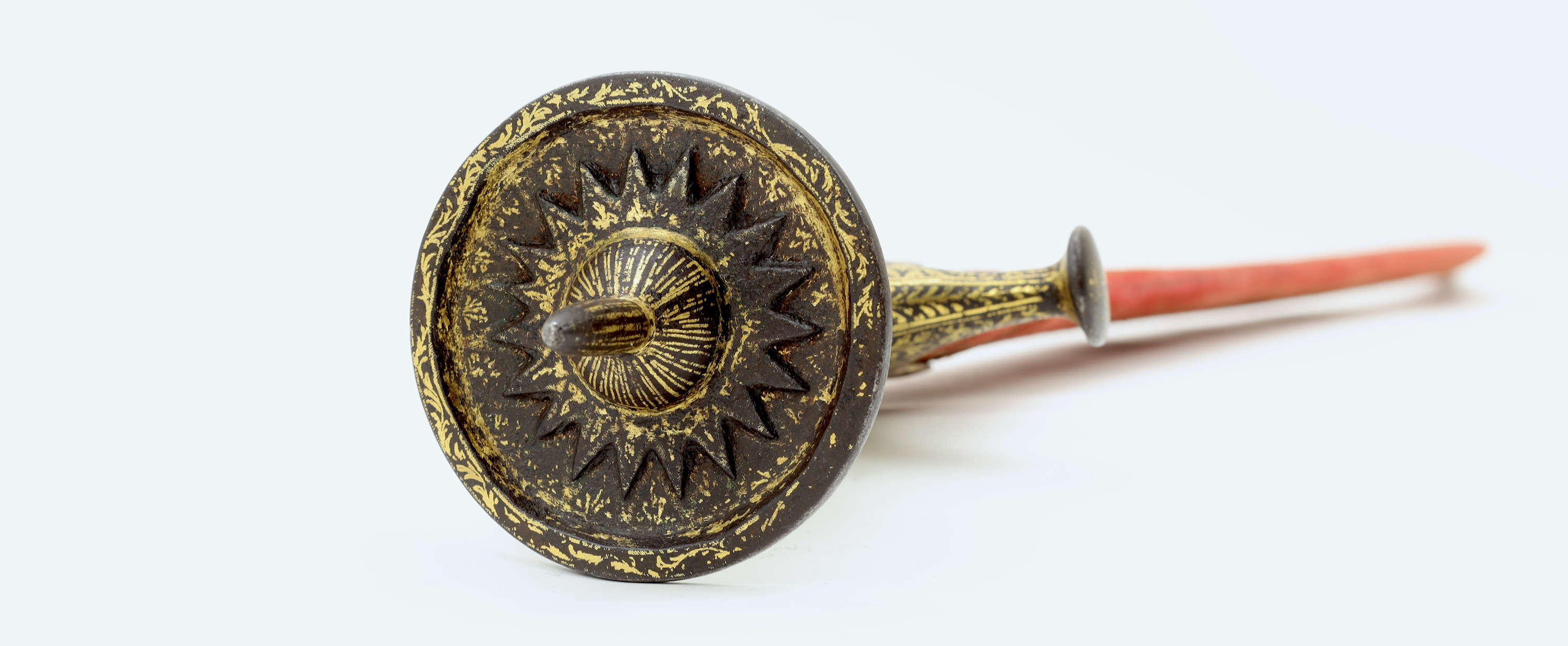
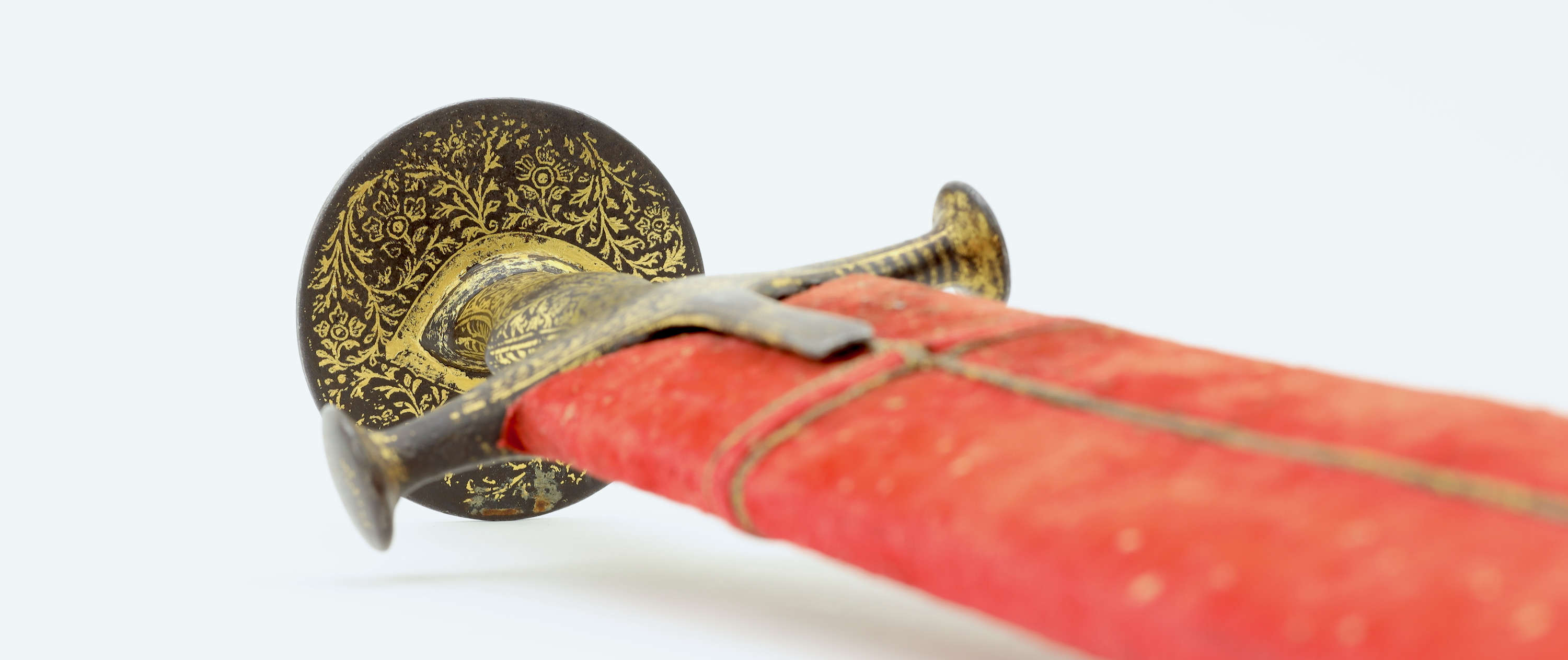
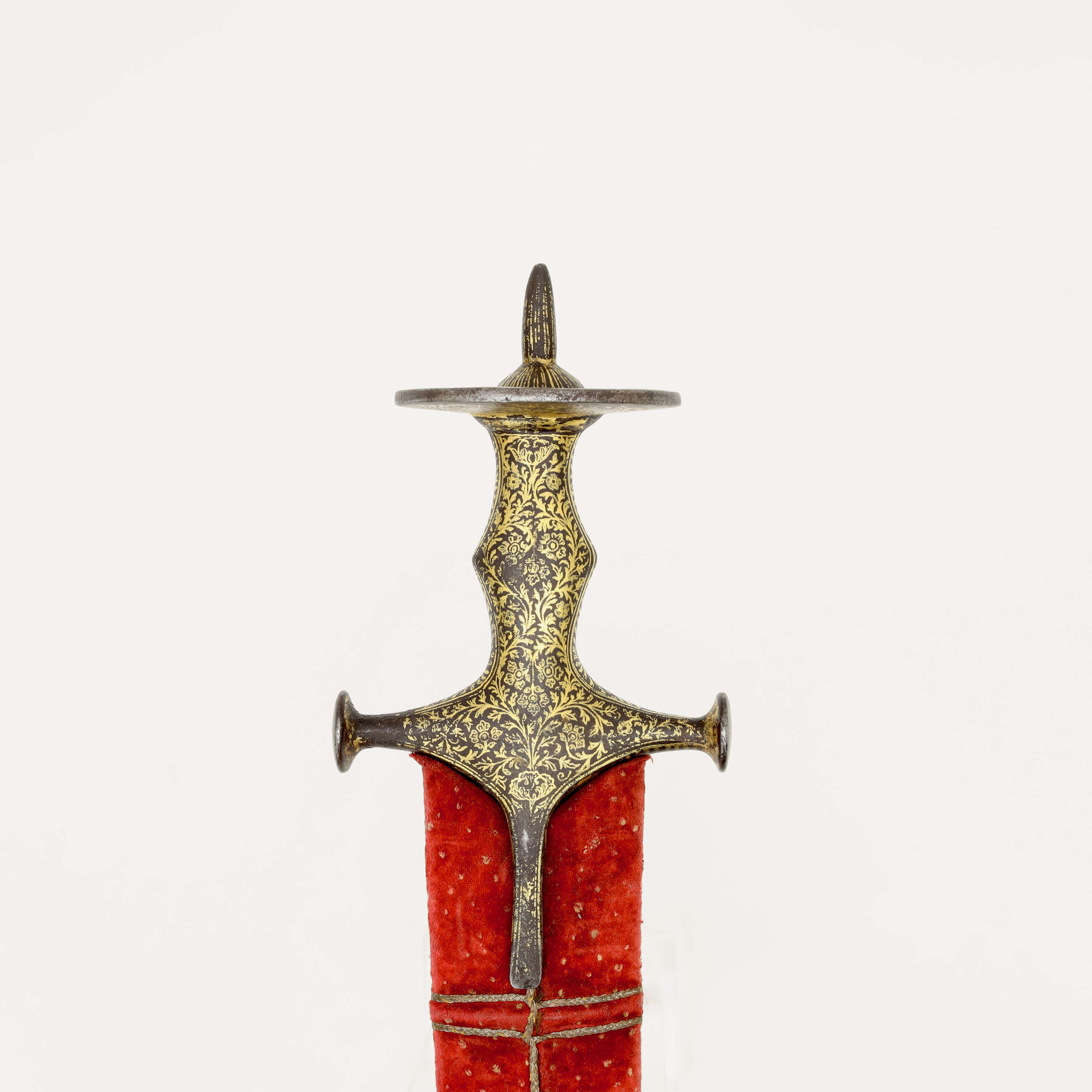
A rare type of dagger from South Kalimantan, loosely based on Islamic daggers seen worn by traders.
This peculiar sword was used by the Garo people of Assam for fighting, clearing the jungle, and animal…

